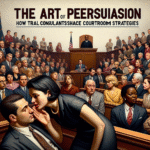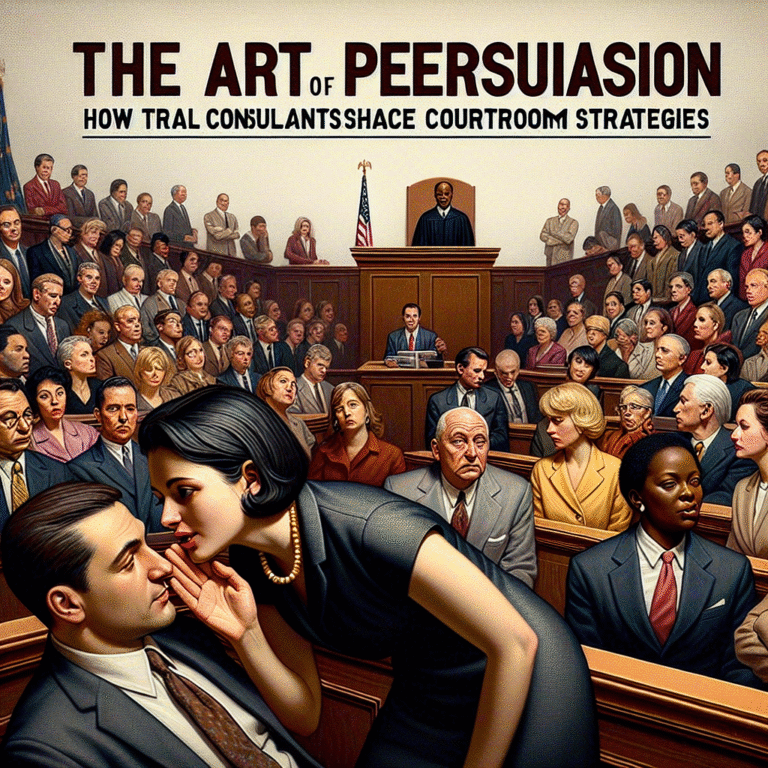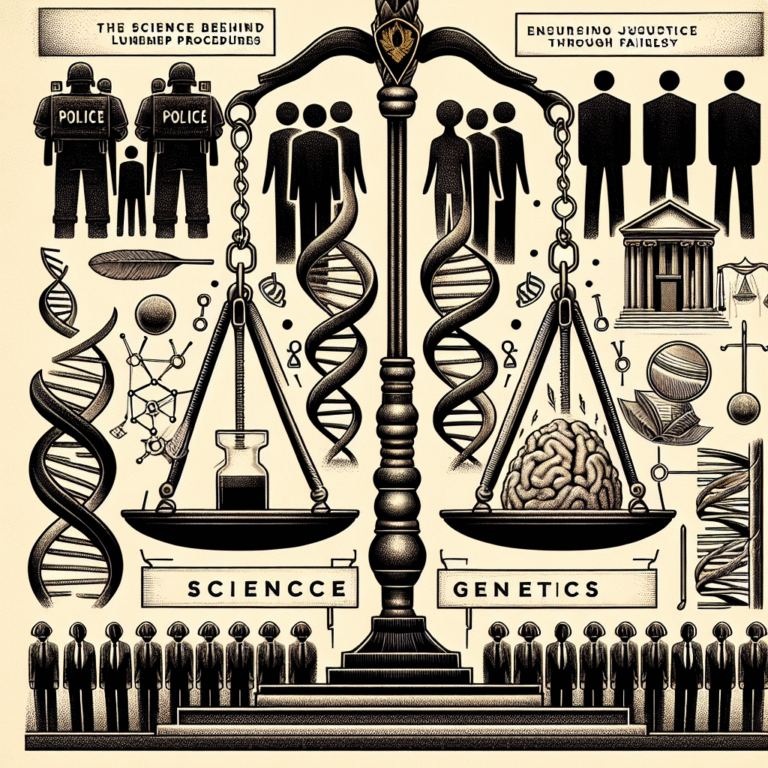
It’s been over 135 years ago when Thomas Bond first looked into the Jack the Ripper murders in 1888. Yet, today, criminal investigators are not sure which psychological methods really solve crimes. This work started what we call offender profiling today, a field that has caused a lot of debate in law enforcement.
The field has changed a lot from Bond’s early days to today’s science-based methods. Now, experts have to choose between old profiling ways and investigative psychology. Each one says it’s better, but which one really is?
This analysis looks at the big difference between these two ways. We see how the field moved from relying on experience to using science. The big question is: which way gives us the best clues for solving tough crimes?
Key Takeaways
- Traditional criminal profiling started in 1888 with Thomas Bond’s Jack the Ripper case analysis
- Modern investigative psychology focuses on science over guesswork
- There are many profiling methods, like FBI types and geographic analysis
- Many say profiling methods don’t have enough proof
- The field is moving from guesswork to science
- Law enforcement has to pick between different ways to solve crimes
The Battle Between Intuition and Science in Criminal Investigation

Today, law enforcement faces a big debate. It’s about how to understand and analyze criminal behavior. This debate is not just about opinions. It’s a fight between old ways of doing things and new scientific methods.
FBI agent Robert Ressler started modern profiling. He said it’s about identifying all psychological characteristics of an individual and forming a general description of their personality based on an analysis of crimes they have committed. This idea sparked a lot of debate in the field.
Old methods rely on experience and gut feelings. Experienced detectives learn to spot patterns over time. They trust their instincts and the knowledge they’ve gained from years of work.
On the other hand, new methods focus on facts and numbers. They need psychological research foundations and clear results. They don’t rely on feelings but on data.
But, some people doubt the reliability of these new methods. Studies from 2007-2008 called some criminal profiling myths into question. This makes the old ways of profiling seem shaky.
| Approach | Foundation | Validation Method | Primary Focus |
|---|---|---|---|
| Traditional Profiling | Experience & Intuition | Case Success Stories | Pattern Recognition |
| Scientific Analysis | Empirical Research | Statistical Testing | Data-Driven Results |
| Hybrid Methods | Combined Approach | Multiple Validation | Balanced Framework |
The debate affects real cases. It influences how resources are used, what evidence is allowed in court, and how cases are solved. The choice of psychological profiling techniques matters a lot.
Traditional Offender Profiling: The FBI’s Legacy Approach

Patrick Mullany and Howard Teten started the Behavioral Science Unit in 1972. This unit changed how police understand criminals. It gave them tools to solve violent crimes.
The FBI’s method sorts criminal behavior into patterns. It uses case studies and interviews to create profiles. This is different from guessing.
Behavioral Analysis Unit Methodology
The FBI’s profiling is based on data and patterns. Robert Ressler and John Douglas interviewed 36 offenders in 1978. This gave them a big database of criminal insights.
They look at crime scene evidence and offender behavior. This helps them find leads in investigations.
Clinical Profiling Techniques
The FBI uses psychology in its profiling. They look at mental state and personality. This helps them understand why offenders act a certain way.
This way of thinking helps predict what offenders might do next. It also guides how to catch them.
The Organized vs Disorganized Framework
The organized vs disorganized system was introduced in 1980. Organized crimes are planned and show control. They often target strangers.
Disorganized crimes are more random. They happen with people the offender knows. This system helps police understand crimes better.
Investigative Psychology: David Canter’s Scientific Revolution

British psychologist David Canter changed the game with investigative psychology. He moved away from old ways that relied too much on guesswork. The 1985 Railway Rapist case was a big test for his new science.
Canter’s method is all about starting with facts, not theories. It’s a big change from old profiling. This new way builds profiles from real data and stats.
Evidence-Based Psychological Principles
At the heart of this new field is interpersonal coherence. It says criminal acts mirror our everyday social behaviors. This idea helps us understand criminals by what they do, not just what they might think.
Looking at where crimes happen is another key part. It adds a scientific layer to crime solving. This way, we can spot patterns that might not be obvious at first glance.
Statistical Analysis Over Intuition
Canter’s work is all about falsifiable hypotheses and facts. It’s a big step from old profiling that was more based on experience. This new way is more reliable because it’s based on solid data.
This method needs careful forensic investigation to work right. It uses math and stats to find patterns that might not be seen by the eye alone. It’s a more solid way to understand criminal behavior.
Historical Evolution: From Fiction to Forensic Reality

The study of criminal behavior has a long history, starting with ancient observations. It shows how perpetrator traits went from philosophical ideas to scientific study. The first mention of this is in Quintilian’s “Instruction to the Speaker” from the first century.
Literary works, like Edgar Allan Poe’s “The Murders in the Rue Morgue” (1841), helped shape our view of crime solving. Poe’s detective, C. August Dupin, introduced ideas that later influenced real detectives.
Early Pioneers and Influential Cases
Thomas Bond’s work on Jack the Ripper in 1888 marked a shift from fiction to real science. Cesare Lombroso tried to link physical traits to crime in 1876, but his ideas were flawed.
James Brussel’s profile of the “Mad Bomber” George Metesky in 1956 showed profiling’s value. His work proved that understanding behavior could help solve crimes.
Academic vs Law Enforcement Development
The field of criminal analysis has always faced a challenge. Academics focused on theory and research methods. Law enforcement needed quick, practical solutions to solve crimes.
This split led to different ways of understanding perpetrator traits and crime patterns. It laid the groundwork for today’s investigative psychology.
Methodology Showdown: Art Versus Hard Science
Criminal profiling is at a crossroads. It combines artistic interpretation with scientific rigor. This mix shapes how investigators do behavioral profiling and criminal analysis. It raises big questions about knowledge, evidence, and law enforcement practices.
The debate is not just about preference. It’s about two different views on understanding human behavior. Traditional methods see criminal analysis as a craft that needs years of experience and intuition.
Subjective Interpretation vs Objective Data
Traditional profiling uses clinical judgment and interpretive skills. Experts mix complex behavioral info with their experience and training. Each case is seen as unique, needing a personal touch.
Scientific methods, on the other hand, focus on empirical validation and statistical analysis. They rely on data and methods that can be tested and repeated. This view sees criminal behavior as something that can be studied scientifically, not just interpreted.
Experience-Based vs Research-Driven Approaches
Traditional methods use inductive reasoning, abductive reasoning, and deductive reasoning. They look for patterns and make educated guesses.
Research-driven methods, by contrast, rely on deductive reasoning based on psychological theories. They need testable hypotheses and peer review. The debate is often about whether experience or research is more reliable.
Quality Control and Standardization Issues
The biggest challenge in criminal profiling is the lack of professional regulation. There’s no body to set standards or check qualifications. This leads to quality control problems.
The table below shows the main differences between these methods:
| Aspect | Traditional Profiling | Investigative Psychology | Quality Control |
|---|---|---|---|
| Primary Method | Clinical judgment | Statistical analysis | Peer review required |
| Validation Process | Case experience | Empirical testing | Independent verification |
| Training Standards | Apprenticeship model | Academic research | Standardized certification |
| Error Detection | Post-case review | Statistical measures | Systematic monitoring |
This mix of methods makes it hard for law enforcement. It’s hard to know when to use each method without clear standards.
The Accuracy Problem: Measuring Real-World Effectiveness
The question of profiling accuracy is a big issue in criminal investigations today. It’s hard to know if offender profiling really works. We need to look at many studies and different times to figure this out.
It’s not just about knowing if it works. We also need to know what “success” means in these cases.
Studies show that how well profiling works can vary a lot. These differences come from how each study was done, which cases were picked, and how success was measured.
Success Rate Comparisons
The FBI says they’ve improved from 42% case resolution in 2008 to 56% in 2019. This could mean they’ve gotten better at profiling. But we need to be careful not to jump to conclusions.
It might be because of better training, new techniques, or choosing the right cases to work on.
Other methods don’t seem to work as well. Holmes found that top-down profiling helped solve only 17% of cases. This makes us wonder if we’re using our resources wisely.
Case Resolution Statistics
Copson’s survey gives us a detailed look at profiling accuracy. They found profiling helped catch offenders in just 3% of cases. But, it helped guide investigations in 83% of cases.
This shows that profiling can be useful, even if it doesn’t always lead to arrests. It can help shape how investigations are done.
Independent Validation Studies
Recent profiling case studies are more promising. A 2021 study found success in 188 cases out of 243. That’s about 77% success, but we need to know more about how they chose cases.
Studies on profiling always face challenges. It’s hard to measure how accurate it is because of how subjective it is. We need clear standards to compare studies properly.
Debunking Hollywood Myths About Criminal Profiling
The entertainment world has turned criminal profiling psychology into a magical art. Movies and TV shows make it seem like profilers can read minds. This creates big misunderstandings about what they really do.
Shows like Manhunter and Silence of the Lambs make profilers seem like superheroes. They show them as having amazing powers to understand people’s thoughts.
Hollywood’s stories about criminal psychology are far from true. They focus on the excitement of solving crimes, not the hard work of real profiling.
The Mind Reader Fantasy
TV and movies show profilers as having magical powers. They can figure out why someone committed a crime just by looking at the scene. This idea is that they can read minds.
Canadian journalist Malcolm Gladwell says profiling is like astrology. He points out how easy it is to believe in things that sound true but aren’t. Studies show that police can find truth in both right and wrong profiles of the same person. This is because the statements are so general.
Instant Solutions vs Lengthy Investigations
Real profiling takes a lot of time and effort. It involves studying data and working with others for weeks or months. But Hollywood likes to show quick fixes that solve crimes in hours.
These false ideas make people think profiling is more powerful than it is. It can lead to relying too much on profiling and not checking its accuracy well enough.
Geographic Profiling: Where Science Actually Works
Spatial analysis is a game-changer in crime solving. It uses math and stats to find where crimes happen. This method turns crime spots into data that helps detectives.
This science is based on how people and places interact. Studies show that criminals often stick to certain areas. This makes location analysis a key tool in solving crimes.
Mathematical Models and Distance Decay
Kim Rossmo changed crime solving with his math-based approach. His work shows that crimes are less common the farther they are from the offender’s home. This mirrors how people like to stay close to what they know.
Canter and Larkin found two main types of offenders. Marauders commit crimes near their homes, while Commuters travel to offend. This helps detectives figure out where to look for the offender.
Empirical Success and Validation
Circle Theory proves that geographic profiling works well. By drawing circles around crime scenes, detectives can guess where the offender lives with high accuracy. A study found that 85% of offenders lived inside these circles.
Adding victimology to spatial analysis makes predictions even better. Knowing who the victims are and where they are helps narrow down where the offender might be.
| Geographic Profiling Component | Accuracy Rate | Research Source | Application Method |
|---|---|---|---|
| Circle Theory | 85% | Godwin & Canter (1997) | Offender residence prediction |
| Marauder Pattern | 78% | Canter & Larkin (1993) | Local offending analysis |
| Distance Decay Model | 72% | Rossmo (2000) | Probability surface mapping |
| Combined Spatial Analysis | 91% | Multiple studies | Integrated profiling approach |
Behavioral Evidence Analysis and Crime Scene Assessment
Crime scene analysis through Behavioral Evidence Analysis is more reliable than old profiling methods. It’s a big change in criminal behavior analysis. It focuses on real evidence, not guesses about the offender’s mind.
BEA helps figure out what happened at a crime scene. It looks at physical evidence, what witnesses say, and how the scene was set up. This way, it avoids the guesses that old profiling often makes.
Physical Evidence vs Behavioral Assumptions
Old profiling starts with guesses about the offender’s personality. BEA does the opposite. It uses physical evidence to guide the analysis, not guesses about the offender’s mind.
By looking at the crime scene, we can see how the offender made choices. Things like blood spatter, how they got in and out, and what weapons they used give us real clues. These clues help us understand their behavior without guessing about their personality.
Physical evidence can’t lie; it can’t be wrong. It’s only our failure to find and understand it that can lessen its value.
Victimology and Offender Interaction Patterns
BEA looks at why offenders pick certain victims and how they act with them. This helps us see how they choose their targets and change their behavior based on how victims react.
The idea is that criminal behavior shows patterns we see in everyday life. But forensic psychology says we should prove these connections with evidence, not just assume they’re true. We look for specific behaviors that show the offender acts the same in both criminal and non-criminal situations.
| Evidence Type | Behavioral Insight | Reliability Level |
|---|---|---|
| Physical Trace Evidence | Offender Movement Patterns | High |
| Victim Selection Criteria | Target Preferences | Moderate |
| Crime Scene Organization | Planning Capability | Moderate |
| Weapon Choice | Accessibility and Familiarity | High |
Serial Offender Analysis: Patterns That Actually Matter
Modern serial offender analysis faces a big challenge. It seems logical to think that criminals act the same way all the time. But, research shows that this isn’t always true. Today’s criminal investigation techniques must look beyond what seems obvious. They need to understand the deeper reasons behind serial crimes.
For a long time, two big ideas have shaped how we think about serial offenders. Behavioral consistency means that a criminal’s actions will stay the same over time. Homology says that similar crimes are done by similar people. But, these ideas are not as solid as they seem.
Beyond Simple Typologies
Old ways of grouping serial offenders don’t work well. A study by Mokros and Alison (2002) looked at convicted rapists. They found no significant correlation between crime scene behavior and the characteristics of the offenders.
This discovery shakes the foundation of many profiling methods. Just because crimes look similar doesn’t mean the people who commit them are alike. Simple ways of grouping crimes don’t capture the true complexity of serial offender behavior.
Behavioral Consistency Research
Studies show that some behaviors stay the same in a criminal’s actions. But, these stable behaviors are linked to core psychological needs and motivations, not just how they plan their crimes. David Canter’s idea of “central narrative themes” helps us understand this.
Good behavioral evidence analysis must separate stable psychological traits from changing tactics. The surface-level actions might change due to different situations or learning. But, the deeper psychological patterns show more consistency.
This deeper understanding requires us to move away from simple categories. We need to use more complex psychological frameworks. These should consider personality, situation, and how behavior changes over time.
Case Study Breakdown: Successes and Spectacular Failures
High-profile criminal cases are like real-life labs for profiling. They show us both great successes and big failures. These cases teach us a lot about psychological profiling and how it works in real life. They help us see when profiling helps and when it leads us astray.
The Railway Rapist: Investigative Psychology Triumph
David Canter’s work on the Railway Rapist case is a big win for investigative psychology. John Duffy committed 24 sexual attacks and 3 murders near London’s railways in the 1980s. Canter used a scientific approach to create a profile that was very accurate.
The profile was right about Duffy’s age, marital status, job, and where he lived. But it didn’t directly catch Duffy. This shows that psychological profiling can guide investigations, even if it can’t always find the culprit.
Atlanta Child Murders: Traditional Profiling Challenges
The Atlanta Child Murders case showed the limits of traditional profiling. FBI criminal profiling faced many challenges, like understanding the community and finding the right suspects. This case showed that profiling can fail when it doesn’t consider the local culture and social context.
This case taught us the importance of looking at cultural factors and community ties in criminal analysis. It showed that profiling works best when it understands the local scene and avoids making assumptions.
Mad Bomber Case: Early Profiling Success
James Brussel’s 1956 profile of the “Mad Bomber” George Metesky was a big win for profiling. But, looking back, there were big mistakes that weren’t talked about much. Brussel thought the bomber was from Germany, but Metesky was actually from Connecticut.
This case warns us about the dangers of only sharing the good parts of profiling stories. It shows how focusing on the right guesses can make profiling seem more accurate than it really is.
Lessons from High-Profile Mistakes
Looking at profiling failures, we see some common problems. These include being too sure about the accuracy of profiles, not thinking of other possibilities, and not keeping a clear line between guidance and conclusions. These mistakes happen when profiles are seen as the final word instead of tools to help investigations.
| Case Study | Profiling Approach | Key Outcome | Primary Lesson |
|---|---|---|---|
| Railway Rapist | Investigative Psychology | Accurate guidance provided | Scientific methods show promise |
| Atlanta Child Murders | Traditional FBI Methods | Limited effectiveness | Context matters significantly |
| Mad Bomber | Clinical Profiling | Mixed accuracy claims | Avoid selective reporting |
| High-Profile Errors | Various Approaches | Investigative misdirection | Maintain realistic expectations |
Technology Integration: The Future of Criminal Analysis
Advanced tools are changing how we study criminal behavior. Modern forensic psychology uses data to improve offender profiling methods. This new approach helps solve old problems and keeps the psychological insight needed to understand crimes.
Law enforcement has seen the power of data collection for over 30 years. The Hunter Integrated Telemetry System database helped start a new era of analysis across different areas.
AI and Machine Learning Applications
Artificial intelligence is making a big difference in analyzing crimes. Machine learning finds connections in serial offender patterns that humans might miss. These systems get better with more data.
These advanced tools look at crime scenes, victim details, and when crimes happen. They help make predictions based on evidence. This method makes analysis more consistent and less open to personal opinions.
Big Data and Pattern Recognition
Big data lets researchers look at many cases at once. It finds links between crime evidence and the people who commit crimes. Systems can spot patterns in serial offender patterns better than people can.
But, using technology well means combining it with human insight. The best approach will use both to solve complex crimes.
Training Standards: FBI Academy vs University Research Programs
Training for criminal profiling varies between the FBI Academy and university research. This difference leads to big gaps in how we learn about profiling. Without one set of rules, people with different skills can call themselves profilers. This makes it hard to trust the science behind profiling.
The FBI Academy teaches by using real cases and learning how to solve them. They focus on skills needed for everyday police work. Law enforcement training helps officers tackle crimes right away.
University programs, on the other hand, dive deep into psychology and statistics. They teach how to do research and analyze data. This way, they prepare students for psychological profiling techniques based on solid science.
Certification Requirements and Quality Control
There’s no single rule to say who can be a criminal profiler. This makes it tough to keep quality high. Professional standards vary a lot.
Without a must-have certification, anyone can call themselves a profiler. Even though there’s not much proof that profiling works, many police officers believe in it.
| Training Approach | Primary Focus | Key Strengths | Main Limitations |
|---|---|---|---|
| FBI Academy | Practical Application | Real-world experience | Limited research foundation |
| University Programs | Research Methods | Scientific rigor | Theoretical emphasis |
| Hybrid Approach | Integrated Training | Balanced preparation | Implementation challenges |
To improve profiling, we need to mix both ways of learning. Mandatory education in research, stats, and hands-on experience is key. This would make profiling more reliable.
International Perspectives: What Works Globally
Offender profiling is used worldwide, showing big differences in how it’s done. Countries like Sweden, Finland, New Zealand, and South Africa use it. This shows how useful it is and how it needs to fit each culture.
In the UK from 1981 to 1994, 242 times profiling advice was given by 29 experts. This is a detailed look at how forensic investigation is used around the world.
UK’s Investigative Psychology Success
David Canter’s work in the UK has changed how profiling is done globally. The UK focuses on using facts over guesses. This means they rely on numbers and solid evidence.
British police use special methods that mix science with real-world needs. This helps a lot in crime scene assessment and understanding patterns.
European Evidence-Based Approaches
In Europe, universities and police work together more. Countries like Sweden and Finland use advanced stats and math in their profiling.
But, using profiling in different cultures is tricky. Laws and social norms vary, making it hard to apply Western methods directly.
| Region | Methodology Focus | Primary Strength | Cultural Adaptation |
|---|---|---|---|
| United Kingdom | Investigative Psychology | Statistical Analysis | Moderate |
| Scandinavia | Mathematical Models | Research Integration | High |
| Continental Europe | Evidence-Based Methods | Academic Collaboration | High |
| Developing Nations | Adapted Western Models | Local Context Integration | Essential |
Critical Limitations and Bias Issues in Offender Profiling
Modern studies reveal major flaws in traditional offender profiling. These issues make it hard for police to use profiling as a reliable tool. They face big challenges in getting accurate information about crimes.
The idea that similar crimes mean similar perpetrator traits has been proven wrong. But, many profiling methods keep using this idea, even though it’s not supported by facts.
Confirmation Bias and Stereotyping
Confirmation bias is a big problem in offender profiling. People often see evidence in a way that fits their preconceived ideas. They don’t really look at other possibilities.
When profiles use general ideas about criminal typology, it can lead to wrong conclusions. These general ideas might not fit every case. This can lead to bad guesses and reinforce harmful social biases.
Traditional profiling focuses too much on personality and not enough on the situation. But, research has shown for decades that situations play a bigger role in what we do.
Legal Admissibility Challenges
Courts are becoming more skeptical about using profiling in court. Many places now want strong scientific proof before they let profiling be used in trials.
Profiling experts are not eager to take part in studies that check how accurate their methods are. This shows they know their methods have big problems. It also slows down the work to make profiling better and more reliable.
Most profiling methods think behavior is mostly about personality, not the situation. But, research has known this is wrong for over 50 years.
Resource Allocation Problems
Police spend a lot of time and money on profiling. This could be better spent on other methods that are proven to work.
These biases mean we need to change how profiling is done and taught. We need to make it more based on science and facts to understand perpetrator traits better.
Conclusion
Investigative psychology is the best way to solve crimes today. Old FBI methods are important but have big problems. They rely too much on guesswork, which science can fix.
A 2021 study showed a big problem with profiling methods. They lack solid scientific backing. This makes them less trustworthy in investigations and courts. We need clear, tested methods for studying criminal behavior.
Studies on victims show that using facts leads to better results. Success stories in geographic profiling show how math and stats help solve cases. These methods make solving crimes more effective.
The field of criminal investigation is at a turning point. Police need to use science more and keep things practical. They should get better training that focuses on science, not just experience.
It’s key to have rules and standards for this field. Using new tech like AI and machine learning can make analysis better. This could really help solve crimes.
Getting better at understanding criminal behavior means sticking to facts, not just guesses. The future of crime solving is in using both experience and science. This way, we can make safer communities based on solid evidence, not just guesses.















